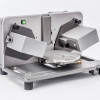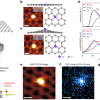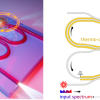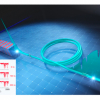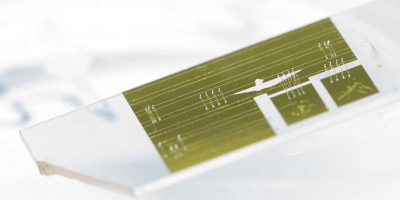
Researchers at ETH Zurich have developed a chip-based, infrared spectrometer. David Pohl and Marc Reig Escalé, in the group headed by Rachel Grange, Professor of Optical Nanomaterials in the Department of Physics, collaborated with other colleagues to develop a chip about 2 cm2 in size. With it, they can analyse infrared light in the same way as they would with a conventional spectrometer. In the device, the incident light is analysed with special waveguides of an optical refractive index that can be adjusted externally via an electric field. This enables the generation of an interferogram.
Depending on how the waveguide is configured, researchers can examine different regions of the electromagnetic spectrum. “In theory, our spectrometer lets you measure not only infrared light, but also visible light, provided the waveguide is properly configured”, Escalé says. In contrast to other integrated spectrometers that can cover only a narrow range of the light spectrum, the device developed by Grange’s group has a major advantage in that it can easily analyse a broad section of the spectrum.
For their spectrometer, the ETH researchers employed a material that is also used as a modulator in the telecommunications industry. This material has many positive properties, but as a waveguide, it confines the light to the inside. This is less than ideal, as a measurement is possible only if some of the guided light can get out. For this reason, the scientists attached delicate metal structures to the waveguides that scatter the light to the outside of the device. “It required a lot of work in the clean room until we could structure the material the way we wanted”, Grange explains.
The work is at an early stage, and the spectrometer currently uses an external camera, which would need to be integrated in any final device. Details are reported in Nature Photonics.










